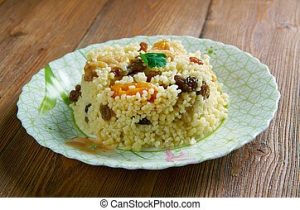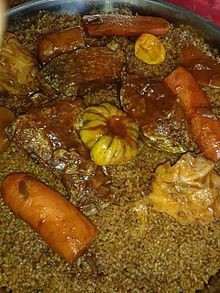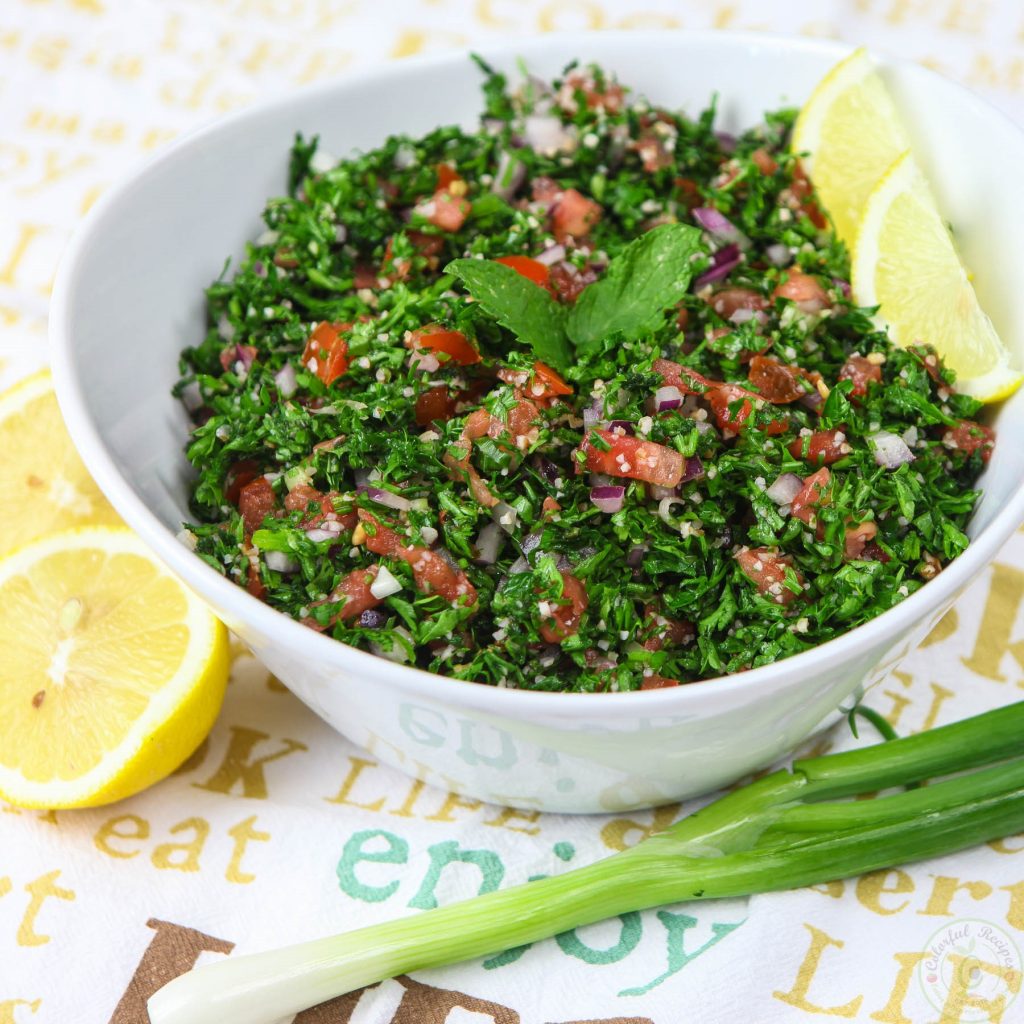Mauritania is a West African country with a rich culinary tradition that reflects its desert climate and nomadic lifestyle. The country’s cuisine is a blend of African, Arabic, and Berber influences, with an emphasis on grains, meat, and spices.
Thieboudienne
Thieboudienne is the national dish of Mauritania, also known as “Chebu Jën” in the Wolof language. It is a rice and fish dish cooked in a tomato sauce with vegetables like carrots, cabbage, and eggplant. The dish is typically served with a spicy sauce called “dakhine” and is a staple of Mauritanian cuisine (Lonely Planet, n.d.).

https://worldfood.guide/dish/thieboudienne_1/
Couscous
Couscous is a staple food in many North African countries, including Mauritania. It is a type of pasta made from semolina wheat that is steamed and served with a variety of vegetables, meat, and sauces. In Mauritania, couscous is often served with lamb or chicken and a spicy sauce made with onions, tomatoes, and chili peppers (Africa.com, 2018).

https://www.canstockphoto.com/mauritania-dish-couscous-33628989.html
Thiebou yapp
Thiebou yapp is a variation of thieboudienne that is made with beef instead of fish. It is a popular dish in Mauritania, especially among the nomadic communities who raise cattle (Culture Trip, 2018).

https://en.wikipedia.org/wiki/Thieboudienne
Toumache
Toumache is a traditional Mauritanian bread made from millet flour. It is cooked on a flat griddle and served with a variety of dishes, including stews and soups (Lonely Planet, n.d.).
Maru weleed
Maru weleed is a traditional Mauritanian dessert made from dates, peanuts, and sesame seeds. The ingredients are ground together and formed into small balls, which are then coated in sesame seeds. The dessert is often served with sweet tea (Africa.com, 2018).
Mauritanian cuisine is a reflection of the country’s cultural diversity and history. The dishes mentioned above are just a few examples of the rich culinary traditions of Mauritania, which have been shaped by centuries of migration and trade.



